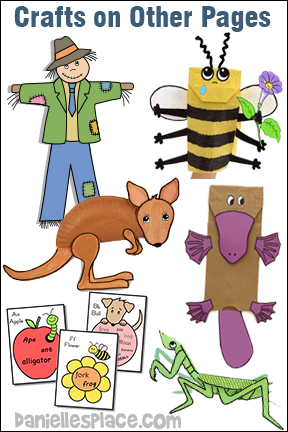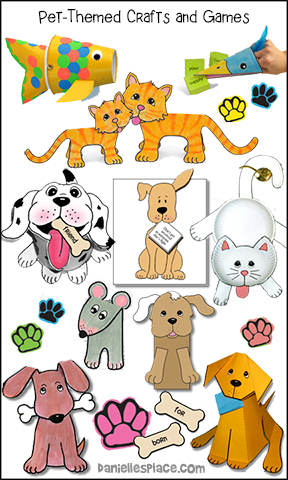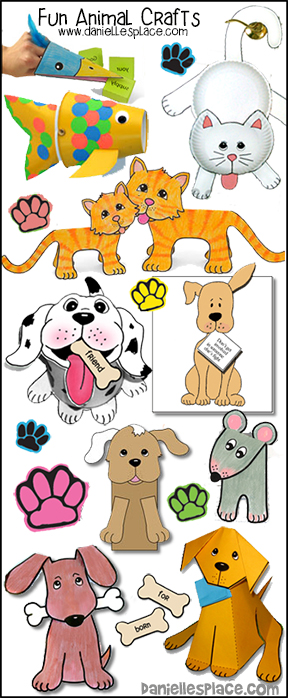Why Use Crafts and Learning Activities to Teach?
Children learn best when they can use all their senses, and crafting is one teaching tool that allows children a wide variety of experiences. Making crafts help children improve their manual dexterity, and give them the opportunity to discover how to use new tools, materials, and methods. Crafts and other artistic endeavors can help children achieve success in all areas of their lives.
Arts and crafts teach children problem solving skills which lead to success.
Making things and coming up with new ideas about how to accomplish a task teaches children how to solve problems for themselves. When they accomplish small tasks, they gain confidence to accomplish even larger tasks.
Brainstorming, applying ideas, and carrying out plans to the finish are skills that will help children achieve success in all areas of their lives.
Arts and Crafts can teach perseverance and patience. Children learn that things don't always turn out the way they imagined, but if they keep trying they may find a new way to accomplish a task.

Arts and crafts can teach independence and decision making leading to a sense of accomplishment and pride in oneself.
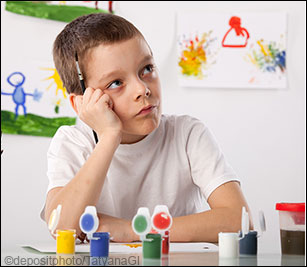
When children complete projects or discover how to solve problems through trial and error they become more independent and self-confident. This sense of accomplishment will flow into other areas of their lives.
When things don't go as planned children learn to accept defeat and become more realistic about their abilities and limitations.
Creating things that they can actually use in everyday life, or creating things they can share with others will give them a sense that they are important and can contribute to society in a positive way. Buying gifts for others doesn't have a lot of meaning for a child since thee child is not expending any effort or putting much thought into the process. Giving gifts that he made especially for someone has much more meaning to the child.
Through hands-on activities children learn more and remember longer.
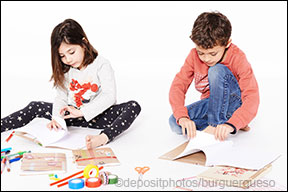
Benjamin Franklin said, “Tell me and I forget. Teach me and I remember. Involve me and I learn.”
You can tell your child that snails have two sets of tentacles with eyes at the end of one set, they can watch a movie about snails, and observe them walking across their desks, but when they actually have to make replicas of them,
they must study the creatures to know what the tentacles looks like, how and where they protrude from the head, how long they compare to the rest of the body, their color, and how to make them so they bend, etc. Crafting brings the object of study up close and personal. In a way children are recreating it, so they must know it intimately. This, in turn, gets them to ask questions so they learn much more, and remember much longer.
Arts and crafts promote self-education.
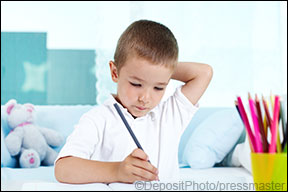
When a child makes something, or sets out to make something, he begins to wonder how to accomplish the task. He has to consider all aspects of the subject and figure out how to recreate it. Through this process the child obtains a sense of wonder and awe of the world around him, and strives to learn even more. His excitement to share his findings with others.
Art and crafts help children develop essential skills for the future.
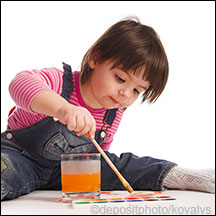
Cutting, pasting, ordering, organizing, combining colors, creating displays, working with different materials and learning how they bend and react to other materials, and what they can and cannot do are all essential skill that children will use throughout their schooling to make displays, posters, and pictures for their classes.
The more skills children learn before they will be graded on their work, the more successful they will be.
Arts and crafts increase creativity and help children reach their potential.

The Bible tells us that God created us in his image. All children possess creativity, and should be encouraged to use it to solve problems, share their feelings and perspectives, and consider the possibilities.
It takes very little effort to provide your child with the necessary supplies and room to work.
Materials can be bought from second-hand stores and garage sales at very reasonable prices, or can be collected in your own backyard and community.
Some Keys to Success
Using arts and crafts is not the only avenue to success. Reading, sports, music, performing arts, a good education, and good nutrition all play a role in developing creative and self-sufficient children. Here are some things you can do to foster successful children.
1. Set up a space where your children feel comfortable experimenting and creating messes without being punished.
2. Turn off the television and computer, and spend some quality time with your children making something new or learning a new skill. You and your children will benefit from the experience even if what your creations aren't exactly what you expected.
3. Encourage your children to try new things and to keep trying when things get hard or boring.
4. Listen to your children, answer their questions, and show them how to find the answers when you don't have the answer.
5. Teach your children how to get along with others and respect authority. Demonstrate good morals through your own actions.
6. Let your children solve their own problems. Don't be too quick to step in and take over when your children are struggling. Remember the struggle is what makes your children strong.
7. Teach your children not to measure their success by comparing themselves to others.
©2014, Digital by Design, Inc. - Do not copy and publish this material on any other website.
Using Crafts on Danielle's Place to Teach Children
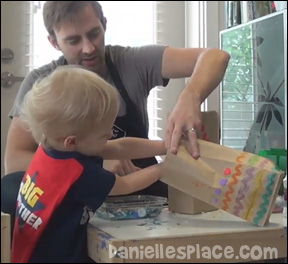
Although many of the crafts on Danielle's Place are not designed for toddlers and preschool children, they can be used with parental supervision. Parents and teachers should precut patterns and prepare anything that is too complicated for their age group.
Younger children will enjoy painting, gluing, using stickers and tape, coloring, pouring, stuffing and other important skills used to make these crafts.
Talk about texture, shapes and color as your child works. Encourage them to make the craft the way they would like. Don't force them to make it in a certain way. If they want to use extremely large eyes, different-sized of eyes or strange colors, let them. It is their project. There is no wrong or right to creating things.
Most of the crafts on this website are designed to go along with children's books or to be used as learning activities. Children will enjoy playing with the crafts, but make sure they are supervised by an adult. Some children enjoy taking crafts apart as much as they do putting them together.
When working with young children encourage them to try new things. Try not to complete the craft for them unless they just can't do it or it is dangerous. Let them them try to figure out how the craft goes together. If they start getting frustrated, show them how, and then let them try again. Independence and self-sufficiency will be learned through frustration and learning how to solve problem on their own.
Teaching Art to Children
You don't need to be an artist to teach art to children, but you do need to:
1. Provide as many different artistic media as possible - crayons, markers, water color paint, acrylic paint, charcoal, pastels. Keep a good supply of paper, recycled boxes, bags, and containers. You will also need a wide variety of paint brushes. Garage sales and rummage sales are a great place to find craft supplies. Collect buttons, yarn, materials from old garments and socks. Collect leaves, acorns, rocks, and dried flowers from your yard and neighborhood. When you go on vacation pick up brochures, maps, collectables, and take photos of your trip to use for scrapbooking or to make collages.
2. Keep an open mind.
3. Let your children experiment and make messes. There isn't a write of wrong way to create art. Remember that your child's project doesn't have to look like the original. Use craft sample projects to simulate your child's imagination; and encourage your child to come up with his own ideas on how to make the project.
4. Help your children learn to look at art by asking questions such as:
How does it make you feel? What do you like about the picture? What do you dislike about it? Why do you dislike or like the work? What does the picture of images remind you of?
5. Look at as many original works of art as possible. Visit museums and art shows.
6. Keep a file of your and your child's favorite pictures from the Internet. Pinterest, www.pinterest.com, is a great way to do this. Start a board and pin pictures you and your child especially like.
7. Research the pictures to find out what media was used and the name of the artist.
8. Children's books have great examples of artistic techniques. When you read a story talk about the illustrations. As your children the same questions as above.
9. Enroll your children in local art classes for children.


